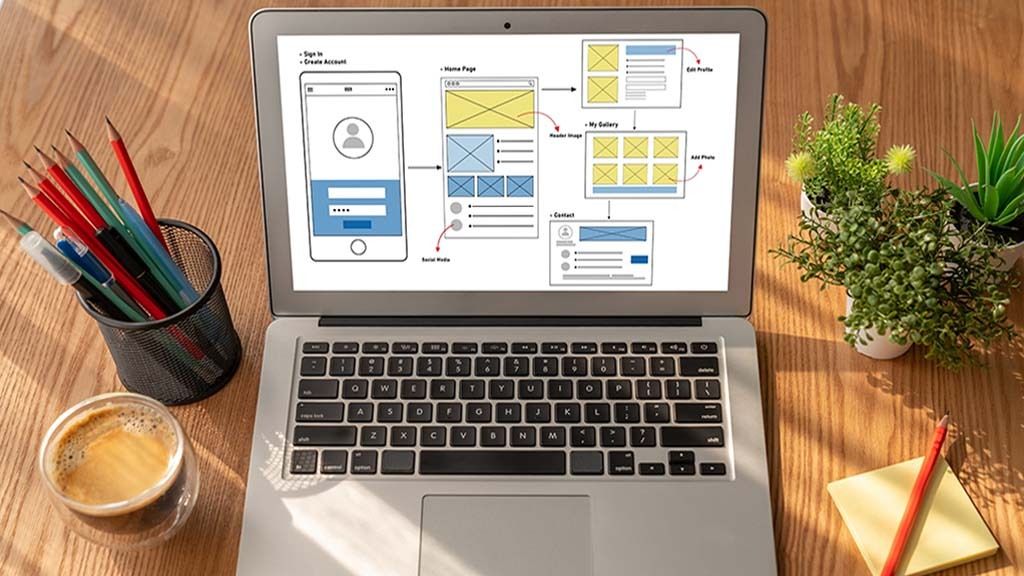The definition of the mobile app development process can be broad: it includes all the processes involved in the creation and production of a mobile application, or specifically, relating to the coding and deployment of the application. This article covers both definitions of mobile application development and focuses explicitly on defining mobile application development for people who make decisions or are responsible for how the app is built.
To define mobile application development, we must start by defining mobile, which in this case refers to portable electronic devices such as smartphones, tablets, laptops, smart watches, e-readers, and handheld game consoles. By application, we mean not only the native software for these devices but also the standard operating systems, platforms, and languages supported by these devices. As you learn, there are many ways to approach mobile app development.
The Mobile App Development Process Steps
The mobile application development process is the process of creating a mobile application, including the analysis, design, development, testing, release, and maintenance of the software. The mobile application development process is done in a series of steps: The steps include:
Strategy
The mobile app development process starts with understanding why a mobile app might be an excellent solution to a problem or approach to an opportunity, then determining what to build and how. During the strategy phase, organizations establish the application’s goals and success metrics, analyze the market and competition, research their customer needs, and determine the users and use cases that the application will serve. In the strategy phase, organizations can also begin to explore which mobile application development platforms work best with their goals and requirements.
Planning
During the planning phase, organizations agree on four key details of the mobile app development process: teams, tools, technologies, and timelines. By now, they have an idea of what type of mobile app they need to build, who is going to develop the app, and what platform or platform they will be using. During this phase, organizations define a product roadmap, determine which features will be released in order and when to set milestones, and design a project plan that will allow them to meet the planned release date.
Design
In this phase of the mobile application development process, teams map out the user experience and create user interfaces and application states in different fidelities. They can start with low-fidelity mockups to provide proof of concept or gather early-stage customer feedback. Developers and engineers can help you create prototyping or guidance on user experience and user interface decisions within these phase teams, taking into account the requirements and technical specifications of the platforms that the organization has chosen to use. In this way,
Development
The word development in this context sometimes refers to the entire software development lifecycle involved in creating and releasing a mobile application. More generally, though, development means the software development phase of mobile application development.
For now, this phase is best described as the stage in which teams establish the technical architecture and technology stack, including front-end server, back-ends, and APIs, define development milestones, determine the app development life and code the app.
Test in Process
Testing is an important phase of the mobile application development process. Without testing, organizations cannot be sure that their application will be secure, work the way users need and expect it to work, and work where they deploy it. During this phase, teams provide quality assurance by creating test cases to assess the app’s usability, performance, stability, and security on all devices the app is intended to run on. execute. Organizations often test the application to ensure that the application architecture can be scaled to meet sudden high demand.
Version
The final phase of the mobile application development process is released. Once the app is deployed, the organization provides support to customers using it, as well as ongoing monitoring and maintenance to ensure the app is available and working as it should. Marketing campaigns and moves to encourage app adoption often coincide with this phase. If the organization decides to make improvements or changes to the app that are beyond the scope of the changes its development lifecycle is equipped to handle, it can choose to start the mobile app development process over again.
Types of Mobile Apps
When it comes to building apps for mobile devices, organizations have several types of mobile apps to choose from. In this case, the mobile app type does not refer to what the app will allow its users to do but how the app will be generated.
Native Apps
Applications specific to a specific device or platform, such as Android or iOS, are called native applications. These apps run directly on the device’s operating system, use platform-provided languages and frameworks, and are deployed through the OS-specific store or marketplace. Native apps usually have full access to all features and hardware of the devices they run on.
Cross-Platform Apps
Teams can code into the app in the languages and frameworks of their choice, then compile the code for each operating system the app needs to run on using platforms like Xamarin. Cross-platform apps, as they are called, allow teams to run on many different devices and reuse a lot of code, although bridging code is more work than developing for a single platform.
Progressive Web Apps
Like web apps, progressive web apps run in mobile browsers and are typically built using JavaScript, CSS, and HTML5. What makes web apps progressive is their ability to provide push notifications, better touch gestures, and material interaction using advanced browser features. There are no SDKs to help you build Progressive Web Apps, but they can be deployed without going through a marketplace.
Hybrid Apps
A mix of native apps and progressive web apps, hybrid apps are natively coded containers that run web apps. This combination allows the app to access more device features and hardware and run on more device types while maintaining a single codebase. For all their benefits, hybrid apps typically don’t match the performance of other types of mobile apps.
Type of Mobile Application to Generate
The type of mobile app development an organization chooses to build has serious implications on the tools, platforms, infrastructure, languages available to their teams, app distribution, number of codebases to maintain, devices on which the app is running, and even what the app can do.
When deciding what type of mobile app to build, it helps to consider who your users will be and what they need from the app. For example, if they primarily use one type of device or operating system, it’s best to use a native app. Apps that don’t rely on hardware or GPS sensors might be well suited for progressive or hybrid web apps, but maybe not if your users don’t have good connectivity. If your users are members of your business or organization, you may want to consider a different mobile strategy. And, of course, it all depends on the expertise you have available within your organization or through a partner.




